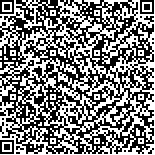下载中心
优秀审稿专家
优秀论文
相关链接
摘要

提出一种应用在3维数字地球中的通过图形处理器(GPU)快速实现矢量数据缓冲区分析的算法。使用一张4通道的纹理图作为容器将地理实体的矢量数据传入GPU,利用GPU的高效并行特性,将目标缓冲区纹理中的每个像素所对应的矢量坐标与原实体进行距离量算,在一次渲染中得到缓冲区纹理,最后提取出缓冲区纹理的边界。选择中国的流域和湖泊矢量数据,将本文算法与两种传统的CPU算法进行了缓冲区分析计算、测试和对比。结果显示,本文算法相对于传统矢量算法效率提高了9—16倍,相对于传统栅格算法效率提高11—20倍。实验证明,该算法计算简单,效果明显,特别是随着数据量增大,缓冲区计算速度显著优于传统算法,并能有效解决传统矢量法缓冲区分析中的数据自相交问题。
In this paper, we propose a new algorithm to realize rapid buffer analysis of vector data in three-dimensional digital earth using a Graphic Processor Unit (GPU). In this algorithm, a texture map with four channels is used as the container to transmit the vector data to a GPU with highly efficient parallel computing features. The distance between the vector point corresponding to each pixel in the target buffer texture and the original object is calculated in the GPU, and the buffer texture is obtained by rendering one frame before the boundaries of the buffer zone are finally extracted. Our proposed algorithm is also compared with two traditional CPU algorithms by processing data for selected rivers and lakes in China. The result shows that the proposed method has improved the computation efficiency by 11—20 times compared to the CPU raster algorithm and 9—16 times compared to the CPU vector algorithm. The proposed algorithm is simple to use and also can solve the self-intersection problem which is presented in conventional algorithms. With the growth of number of vertexes, the speed of buffer analysis realized with this new algorithm is significantly higher than with traditional ones.

